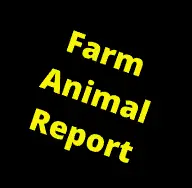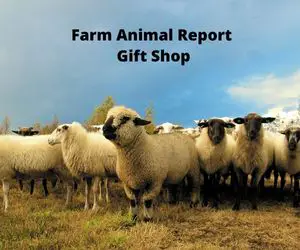How do Deer Farmers Collect Urine? Deers are precious creatures. They are cloven-hoofed ruminants and the only ungulates having antlers. Deer raising is one of the profitable businesses. They are farmed because of their valuable products. Their Products include Deer Meat, Deer Antlers, Deer Hydes and, even deer urine is a worthy product. How it is collected? What are the different benefits of deer’s urine? We will discuss this in detail with reasoning and logic.
How to Collect Deer Urine / Potent Attractant
Deer urine is one of the beneficial and profit-generating products for deer farmers. Deer urine is widely used as an attractant to attract a new deer and increase her curiosity level. This is also used to calm them. Interestingly, it can be used during any hunting season. This simply acts as a natural cover scent.
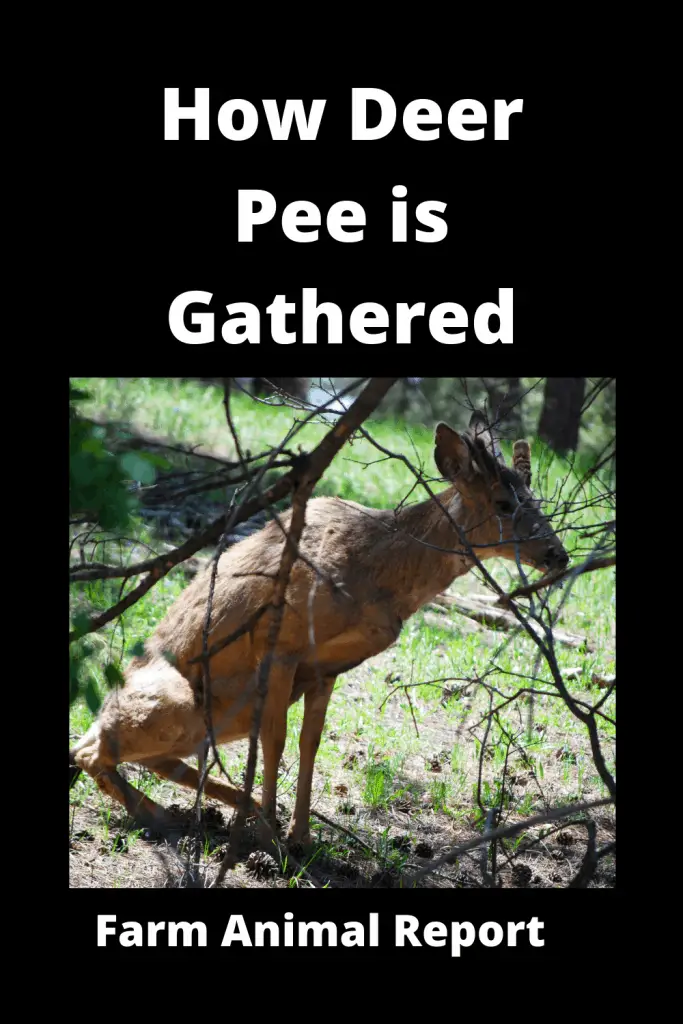
Can Urine Be Collected from Doe and Buck Both? Deer Urine Farmer
Yes, urine of both bucks and does are effective and are commercially sold. But doe’s urine has double effectiveness as it can be used as an attractant to catch the attention of bucks during hunting as well as also a cover scent to eliminate the spooky human door that diverts whitetails from coming close.
Check Out Amazons Educational Books on Whitetail Deer
Deer urine is collected from both sexes throughout the year depending upon its use.
How Do Hunters Use Deer Urine as an Attractant
Hunters use doe urine to capture male bucks during hunting seasons. They simply hang a cotton wick from a tree branch within the shooting range of their stand and then soak the wick in doe urine. They will spray their clothes, spray their Boots to mask their human scent.
See Our Extensive Article – 7 Ways Deer Farmers Make Money
During Deer Hunting season takes place during the Deer Rut. Males for several Months are chasing Does to Breed. The wind carries the scent all around and nearby buck thinks there is some doe in heat to be bred. This is how they come close to the source and easily caught by the hunters.
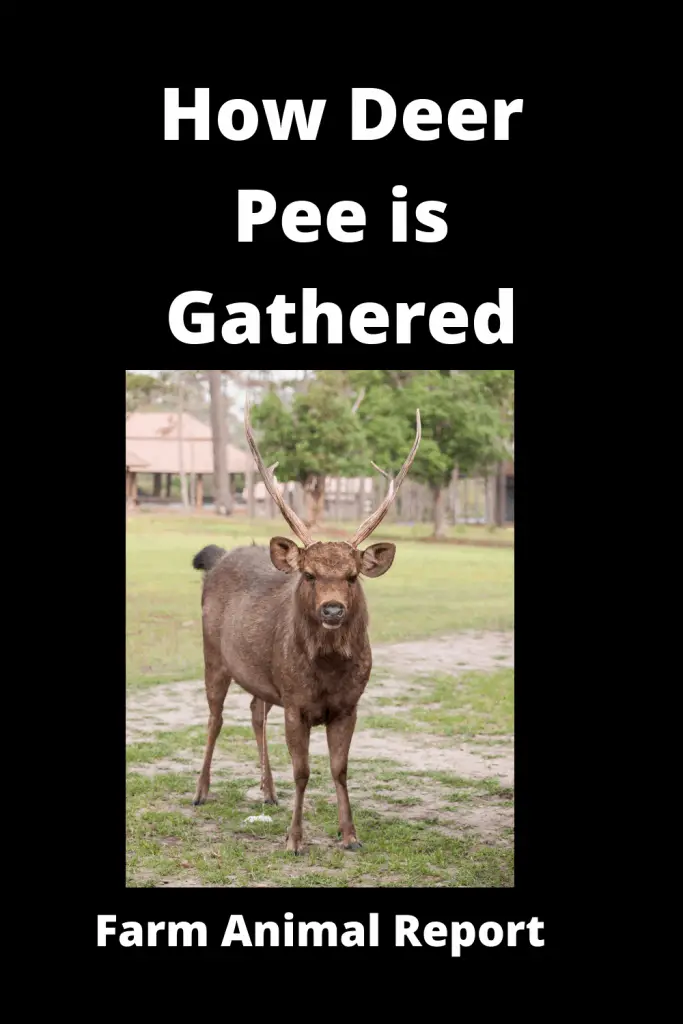
Making Deer Scents – Urine Farmer
Commonly there are two types of scents, cover scents, and lures. Cover scents are designed to mask the human odor with a naturally occurring smell, such as the scent of a tree, plant, or animal.
Lures are intended to draw deer into a gun or bow range out of hunger, curiosity, or sex appeal. They include food scents such as apple, non-estrous doe urine, and—the most sought-after of all—estrous deer urine. No matter what you use, remember that deer can discern multiple odors at the same time, which places a premium on reducing human smells as you deploy these products. For maximum results, stay meticulously clean and wear latex gloves when you handle any scent.
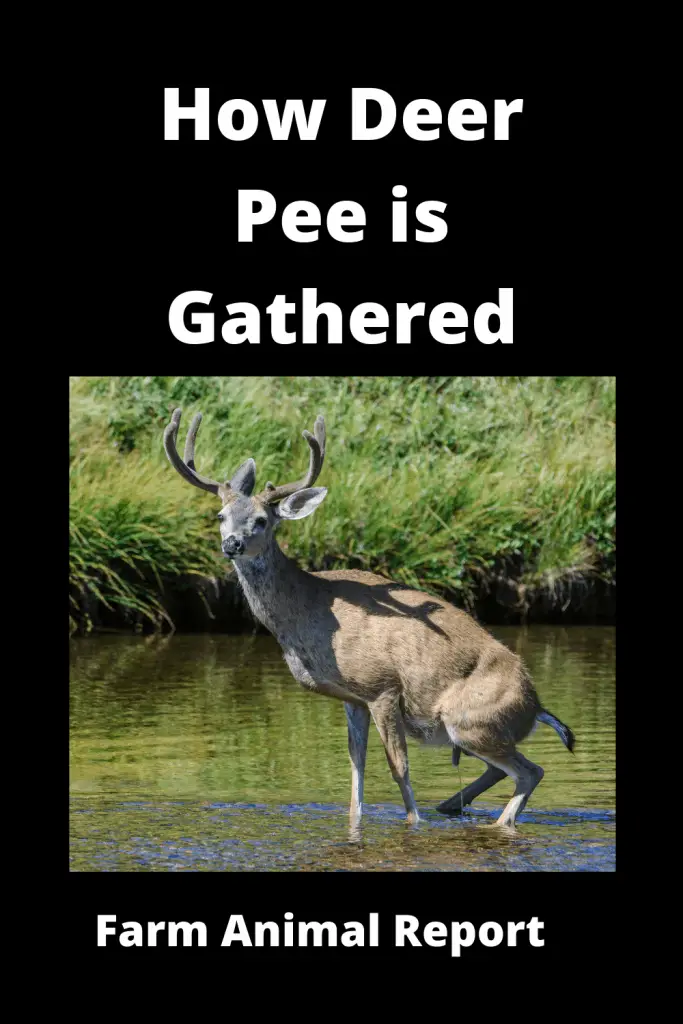
Precautions
There are various risks and factors associated with deer urine. This has been banned in many areas because of the potential pathogens it spreads and causing many diseases. There are many artificial and synthetic scents (commercially manufactured attractants) in the place of natural urine to limit the infectious risks. But these synthetic products have varying efficiencies.
How Deer Urine is Collected
Collecting deer urine is not a simple procedure. This is the trickiest thing. Preferably deer urine is collected in fall when does enters the estrus (heat cycle). Does stay overnight and urinate continuously. These urine drippings fall onto a sloped floor that move is linked with a vat. Drippings from the floor are collected in that particular vat and when it becomes full, this urine is refrigerated and farmers sell them out according to their policies.
Deer Urine. The urine collected from the deer is marketable. It is sold out and is a business of selling deer urine. The urine collected from the deer is used for making hunting lure. It is collected in a game farm where deer are kept in a facility with a cement floor that is on a slope to be collected. Often does those are in estrus will be particularly sought after.
In 1990, Collora designed and built a labyrinth of runways that allows him efficiently to guide bucks and does into holding pens and handling stalls. Does are more social and tolerant. So, Collora could fit several in a larger enclosure. Their urine is harvested throughout the fall; as an individual does enter estrus, they are singled out for collection. The deer stays overnight, their pee dripping onto a sloped floor and running toward a refrigerated vat as soon as it is full. The refrigerator usually used is a walk-in refrigerator.
The remaining urine is packaged in two or four oz high-density plastic bottles to be sold under the same brand name. These are sold to locals. These locals include sporting goods stores, over the website, or through cell phone numbers. For small operations, bottling can be done manually. And bottles can be supplied through the service of transportation
How is Buck Urine Used?
Buck urine is also used to attract other bucks. This provokes other bucks to fight.
How Much Urine a Typical Deer Produces in a Day?
Generally, a typical deer produces 64 ounces urine in pleasant weather on the other hand 42 ounces when weather is not good.
Production of Deer Urine
If you want to produce deer urine to sell, how will you do it? Paul karosan has been in this business for almost 15 years. He produces and sells urine under some brand name.
According to him, the first important factor is to have a tame deer. He bottle raises all his fawns that will later provide the urine. This includes the bucks. Tame bucks can be very dangerous during the rut, so remove their hard antlers for your safety.
Collection of Urine
The collection of urine method is simple. Buildings of about eight square feet are raised. These buildings have slatted floors that allow the urine to pass through to the subfloors, draining urine into a pipe and then into a bucket. The urine is collected every morning and refrigerated.
Put two does in overnight for about twelve hours. They have all the water and feed they need. Two can produce about a gallon and half a pee in this period. Since the deer regularly eat in the buildings, there is no stress to them. The floors are pressure washed regularly to keep them clean.
By boarding up the buildings to make them darker causes the does to come into heat. This is one way the doe in heat urine can be collected earlier and be on the market for hunting
The collected urine is strained. Paint filters from the local body shops are excellent. The urine is immediately refrigerated. Add a preservative sodium benzoate (the same stuff found in drinks). Much of the urine is stored in five-gallon buckets and shipped to scent companies all over the USA. Doe in heat urine currently is being sold from seventy to a hundred dollars per gallon.
Why Pure Urine is Effective?
This has been documented that pure urine is effective in attracting and stimulating other deer. When you add preservatives or another chemical they tend to change the chemistry of urine and interfere with pheromones, which are major players. It is advisable to ship the fresh urine placed in the cooler to retailers/customers.
Deer Urine Business
Here are some of the Business Considerations if you would like to pursue this avenue in Deer Farming.
The Deer Urine Market
It is enough that the dollar sign dances in the eye of the deer farmer.
A single deer pees about a half of gallon of sixty-four ounces of urine a day. It is being sold as four to thirteen dollars per ounce of pee. It is a great opportunity for a deer farmer.
The Lowdown on Deer Urine Farming
Blog Introduction: You may have never heard of deer urine farming, but it’s actually a pretty big business. Every year, farmers across the country collect and sell the urine of deer for use in hunting. If you’re thinking about getting into the deer urine farming business, there are a few things you should know. Here’s a quick overview of what you need to know about becoming a deer urine farmer.
What is Deer Urine Used For?
Deer urine is used by hunters to attract deer to their hunting area. The scent of deer urine is very strong, and it can travel for miles. This makes it an ideal tool for hunters who want to attract deer to their location. Deer urine can be collected all year long, but the peak season for collecting deer urine is during the fall, when hunting season is in full swing.
How Do I Collect Deer Urine?
There are a few different ways that farmers collect deer urine. The most common method is to set up a urinal in the field where the deer are located. The urinal is simply a container that collects the urine as the deer walk by. Another method of collecting deer urine is to use diapers or sanitary pads to absorb the urine from the ground. This method is less common, but it can be more effective in areas where there are fewer deer.
How Do I Sell Deer Urine?
Once you’ve collected enough deer urine, you’ll need to find a buyer. There are a few different options for selling your deer urine. You can sell it directly to hunters, or you can sell it to companies that make products like deer attractants and scents. You can also sell it to research facilities or universities that study wildlife.
Deer urine farming is a unique business, but it can be a profitable one if you know what you’re doing. By understanding how to collect and sell deer urine, you can get started in this fascinating industry. Who knows—you might even become one of the biggest players in the business!
Deer farming is an agricultural business that involves the breeding and raising of deer for their meat, antlers, and other products. The average deer farm size in the United States is 80 acres. Deer farms are independent businesses that sell deer stock, deer meat, velvet, and deer urine.
The History of Deer Farming
Deer farming originated in New Zealand in the early 1900s. At that time, red deer from Scotland were introduced to New Zealand for sport hunting. However, these deer quickly adapted to the new environment and began to thrive. Farmers soon realized that they could breed and raise these deer for their meat, antlers, and other products.
The first deer farm in the United States was established in 1929. Since then, the industry has grown steadily. Today, there are approximately 1,200 deer farms in the United States.
The Benefits of Deer Farming
Deer farming offers many benefits to farmers and consumers alike. For example, deer farming:
- Creates jobs and boosts the economy: Deer farming creates jobs for farmers, slaughterhouse workers, truck drivers, and others involved in the industry. In addition, deer farms generate income for local businesses such as feed stores and fencing companies.
- Provides a healthy source of food: Deer meat is a lean source of protein that is low in cholesterol and saturated fat.
- Is environmentally friendly: Deer farming is a sustainable form of agriculture that has minimal impact on the environment. Deer are able to graze on grasses and other plants that are not suitable for human consumption. In addition, deer manure can be used as fertilizer for crops.
- Conserves wildlife: By farming deer, we can provide a sustainable source of meat without having to hunt wild populations of animals. This helps to conserve wildlife and their habitats.
Deer farming is an agricultural business with many benefits. It creates jobs, boosts the economy, provides a healthy source of food, is environmentally friendly, and conserves wildlife. If you are thinking about starting a deer farm or are simply curious about this type of agriculture, we hope this introduction has been helpful!
How to Become a Urine Farmer: Turning Waste into Gold
As strange as it may sound, urine farming is a growing industry that has gained attention due to its potential for sustainable agriculture and as a source of nutrients. Urine, after all, is not just waste but also a source of valuable nutrients that can be used as a fertilizer for plants. It’s a win-win situation where farmers get free fertilizer, and individuals can contribute to a greener planet. In this article, we will discuss how to become a urine farmer and how to turn waste into gold.
What is Urine Farming?
Urine farming is the process of collecting, storing, and using urine as a fertilizer for plants. Urine contains nitrogen, phosphorus, and potassium, which are essential nutrients for plant growth. Instead of letting urine go to waste, urine farming turns it into a valuable resource that can be used to nourish plants and help them grow.
The Benefits of Urine Farming
There are several benefits to urine farming. First, it is an eco-friendly way to dispose of waste. Urine farming reduces the amount of water needed to flush toilets, which can save thousands of gallons of water per year. Second, urine farming provides a free source of fertilizer for plants, reducing the need for chemical fertilizers. Lastly, urine farming can save money for farmers, community gardens, and individuals who grow their own food.
How to Collect Urine for Farming?
There are several ways to collect urine for farming:
Using Urine-Diverting Toilets
Urine-diverting toilets separate urine from feces, which can then be collected in a container and used as fertilizer. These toilets can be expensive, but they are an efficient way to collect urine.
Collecting Urine in Bottles
One of the easiest ways to collect urine is to use a plastic bottle. Simply place the bottle in the toilet bowl and urinate into it. Be sure to label the bottle as urine and store it in a cool, dark place.
Urine Collection Tanks
For larger urine collection, it is best to use urine collection tanks. These tanks can be placed under toilets or connected to urine-diverting toilets. The urine can be stored in the tanks until it is ready to be used as fertilizer.
How to Store Urine for Farming?
Urine should be stored in a cool, dark place, away from sunlight. Sunlight can break down the nutrients in urine, reducing its effectiveness as a fertilizer. Urine should also be diluted with water before use to prevent burning plants.
How to Use Urine as Fertilizer?
Urine should be diluted with water before use. A general rule is to mix one part urine with ten parts water. The mixture can be applied directly to the soil or sprayed onto plants. Urine should not be applied to edible parts of plants, such as fruits and vegetables, to avoid any potential health risks. It is recommended to apply urine fertilizer to the soil around the plants instead.
Precautions When Using Urine as Fertilizer
When using urine as fertilizer, there are a few precautions to keep in mind. Urine is high in nitrogen, which can burn plants if not diluted properly. It is important to mix the urine with water before applying it to the soil. Additionally, urine can contain pathogens that can be harmful to humans and animals, so it is recommended to avoid using urine fertilizer on crops that come into direct contact with people or animals. Finally, it is important to wash hands thoroughly after handling urine and urine fertilizers.
Common Mistakes in Urine Farming
One of the most common mistakes in urine farming is using too much urine fertilizer on plants. Overuse of urine fertilizer can lead to nutrient burn and can harm plants. It is important to follow the recommended ratios of urine and water when applying the fertilizer. Another mistake is not properly storing or diluting the urine. Urine should be stored in a cool, dark place and diluted before use to prevent any negative effects on plants.
Common Crops that Benefit from Urine Fertilizer
Many crops can benefit from urine fertilizer, including tomatoes, peppers, eggplants, cucumbers, and squash. These plants are heavy feeders and require a lot of nitrogen to grow. Using urine fertilizer can help provide the necessary nutrients and lead to healthier, more productive plants.
Making Money with Urine Farming
Urine farming can be a profitable business. Farmers can sell urine fertilizers to local garden centers or directly to customers. Additionally, urine fertilizers can be marketed to community gardens, urban farmers, and individuals who grow their own food. Farmers can also offer education and consulting services on urine farming.
Urine Farming for Community Gardens
Urine farming can benefit community gardens by providing a free source of fertilizer. It can also help reduce water consumption and promote sustainability. Community gardens can work with local businesses, schools, and individuals to collect urine for use in the garden.
How to Market Urine Fertilizer
Marketing urine fertilizer requires education and outreach. Farmers should educate potential customers on the benefits of urine fertilizer and how to properly use it. Social media can be an effective way to reach potential customers and promote the benefits of urine farming.
Legal Issues Surrounding Urine Farming
There are currently no laws prohibiting urine farming in the United States. However, it is important to follow local regulations and laws related to waste disposal and water usage.
Urine farming is an eco-friendly and sustainable way to dispose of waste while providing a valuable resource for plant growth. By following proper collection, storage, and usage techniques, urine farming can benefit farmers, community gardens, and individuals who grow their own food. Urine farming may seem unconventional, but it has the potential to change the way we view waste and agriculture.
FAQs
Is it safe to use urine as fertilizer?
Yes, urine can be used as fertilizer as long as it is properly diluted and applied to non-edible parts of plants.
What crops benefit from urine fertilizer?
Heavy-feeding crops like tomatoes, peppers, eggplants, cucumbers, and squash can benefit from urine fertilizer.
Can urine be stored for a long time before using it as fertilizer?
Urine should be stored in a cool, dark place and used within a few days for best results.
Can urine fertilizer be used in organic farming?
Yes, urine fertilizer can be used in organic farming as long as it meets organic standards.
Is urine farming legal?
There are no laws prohibiting urine farming in the United States, but local regulations and laws related to waste disposal and water usage should be followed. It is important to check with local authorities to ensure compliance with regulations.
Conclusion
Deer urine is a precious thing. Deer farmers earn a lot of money after selling it. ( $105 / $110 / Gallon) But this must be remembered that deer urine collection is a sensitive process. It takes care and proper focus. There are a number of benefits of deer urine, especially in hunting. There are various risks and factors associated with the handling of deer urine, initially fresh urine is sterile (free from pathogens) but after exposure, it becomes a source of infections. So, its use in hunting has been restricted in many states but yet there are many other manufactured products that mimic the actual deer urine and are used as replacers to deer urine. Remember, there are various levels of efficiency of various products.
Deer / Cervid Farming / Profitability Table
| Deer Type | Ave Weight | Average Calves/Yr | Gestation | Meat Retail Price/lb |
|---|---|---|---|---|
| White Tailed | 150 | 2 | 201 | $ 38.95 |
| Mule | 120 - 320 | 2 | 203 | $ 7 - 9.50 |
| Elk | 71- - 730 | 1 | 240 - 262 | $ 44.95 |
| Reindeer | 350 - 400 | 1 | 222 | $ 74.95 |
| Moose | 840 - 1500 | 1 | 243 | $ 7.50 |
| Sika | 93 | 1 | 224 | 34.95 |
| Red | 440 | 1 | 236 | $ 35.95 |
| Pere David's | 370 | 1 | 286 | |
| Axis | 79 | 2 | 227 | $ 29.99 |
| Mutjah | 30 | 1 | 214 | $ 39.95 |
Types of Deer for Deer Farming
| Breed of Deer | Weight | Price of Venison | ||
|---|---|---|---|---|
| Whitetail | Buck - 150 lb Doe - 100 lbs | $ 29.50 | ||
| Mule | Buck - 150 - 300 lbs Does - 95 - 200 lbs | $ 44.95 | ||
| Red | Buck 350 - 530 lbs Doe 260 - 370 lbs | $ 21.95 | ||
| Fallow | Buck - 130 - 200 lbs Does - 60 - 90lbs | $ 39.95 | ||
| Axis | Bucks 150 - 250 lbs Does 90 - 150 lbs | $ 43.95 | ||
| Reindeer | Buck 350 - 400 lbs Does - 180 - 260 lbs | $ 74.95 |
See Our Commercial Deer Farming Article
REFERENCES
DRYDEN, G.L., andCONAWAY, C.H. 1967. Origin and hormonal control of scent produced inSuncus murinus.J. Mammal. 48:420–428.
Glenn D. Delgiudice, L. David Mech and Ulysses S. Sea The Journal of Wildlife Management
Vol. 53, No. 2 (Apr., 1989), pp. 284-291
MÜLLER-SCHWARZE, D. 1971. Pheromones in black-tailed deer,Odocoileus hemionus columbianus.Anim. Behav. 19:141–152.
Mathiason CK, Powers JG, Dahmes SJ, Osborn DA, Miller KV, et al. (2006) Infectious prions in the saliva and blood of deer with chronic wasting disease. Science 314: 133–136.
REGNIER, F.E., andM. GOODWIN. 1977. On the chemical and environmental modulation of pheromone release from vertebrate scent marks, pp. 115–133,in D. Müller-Schwarze and R.M. Silverstein (eds.). Chemical Signals. New York, Plenum.
KEY WORDS (DEER URINE) (DEER HUNTING) (DEER DISEASES) (DEER PHERAMONE) (DEER ESTRUS)
